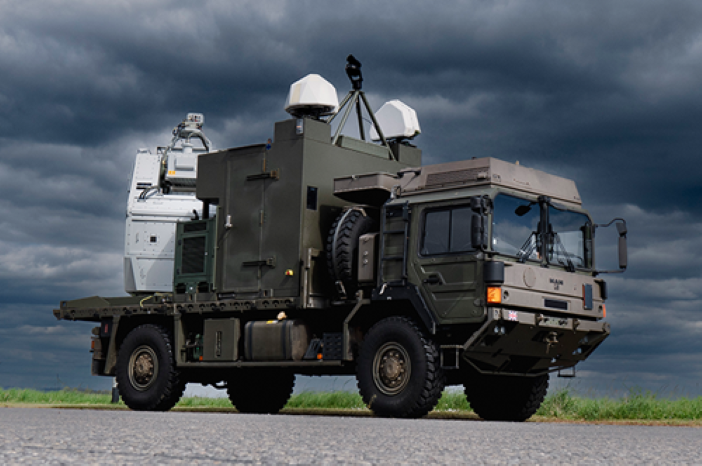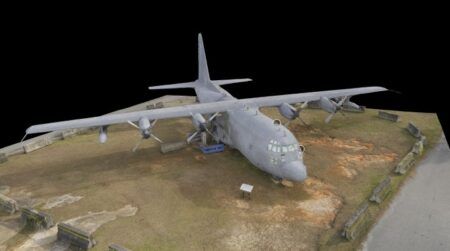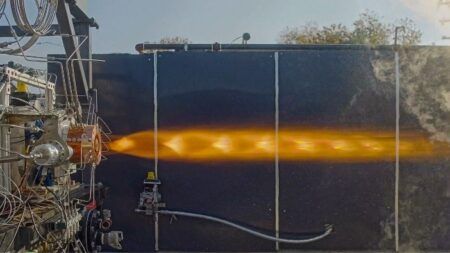The UK Army has tested a directed energy weapon developed in the UK, successfully tracking, targeting and defeating swarms of drones during the trials with a directed energy weapon called the RapidDestroyer.
The RapidDestroyer Radio Frequency Directed Energy Weapon (RF DEW) was developed by a Thales-led consortium. The weapon uses radio frequency waves to disrupt and cause damage to sensitive components and electronics in drones.
The test campaign was completed at a weapons range in West Wales and was the largest counter-drone swarm exercise the UK Army has conducted to date.
The tests included the taking down of two swarms of drones in a single engagement. More than 100 drones were tracked, engaged and defeated using the weapon during the test campaign.
Crucially, the RapidDestroyer costs just 10p per shot. Armed forces around the world have been scrambling to develop alternatives to missile-based air defence systems for destroying low cost drones since the start of the Ukraine War.
RF DEW systems can defeat airborne targets at ranges of up to 1km (0.6 miles) and are effective against threats that cannot be jammed using electronic warfare. UK Defence Intelligence estimates that last year, Ukraine had to defend against attacks from more than 18,000 drones.
The UK’s Minister for Defence Procurement and industry, Maria Eagle said: “This significant experiment exemplifies the strength of British innovation, driven by our home-grown industry, technology firms and scientific talent.”
The project was delivered by Team Hersa – a collaboration between Defence Equipment & Support and the Defence Science and Technology Laboratory. The RF DEW demonstrator was developed by an industry consortium led by Thales UK.
Sgt Mayers, a Senior Remotely-Piloted Air Systems Operator from 106 Regiment Royal Artillery, was the first British soldier to bring down drones using a radiofrequency weapon. He said, “RF DEW is an exciting concept. We found the demonstrator quick to learn and easy to use.
“With improvements on range and power, which could come with further development, this would be a great asset to layered air defence.”
“The development of RF DEW systems could help to protect the UK from unidentified drones at security-sensitive areas such as defence bases, and could play a role in preventing disruption at airports.”
The UK Government has invested more than £40 million (US$52 million) in RF DEW R&D to date, supporting 135 jobs in Northern Ireland and the South-East of England.
An alternative directed energy weapon being developed in the UK for air defense is DragonFire. The £100 million (US$126 million) is led by the UK’s Dstl (Defence Science and Technology Laboratory) and involves aerospace and defense firms MBDA, Leonardo and QinetiQ.





